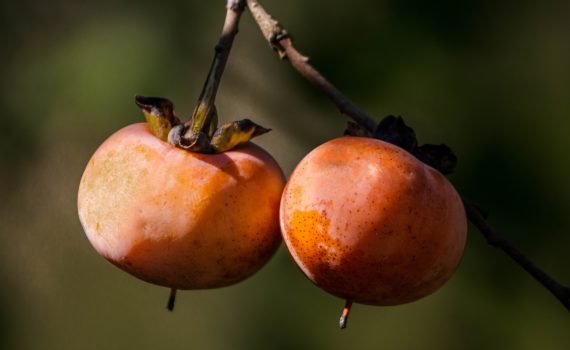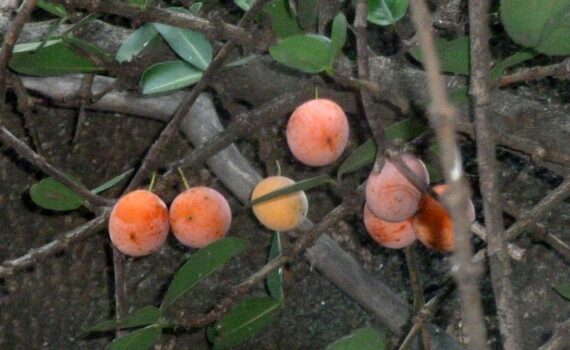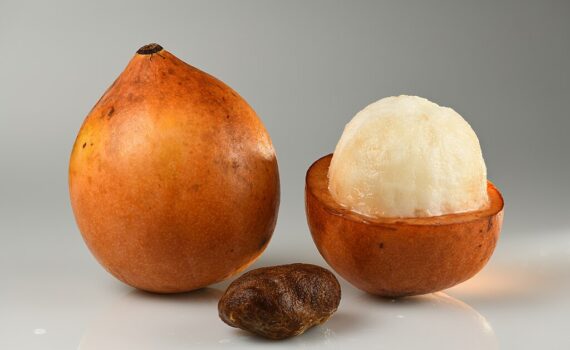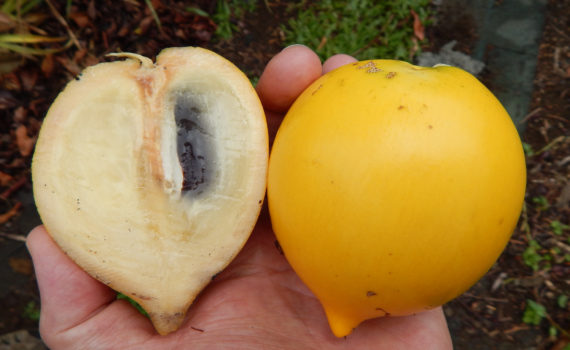Fruits
The genus Vaccinium includes several edible fruits such as Blueberry, Bilberry, Cranberry, Whortleberry, Lingonberry, Cowberry and Huckleberry. They all grow in regions with a temperate climate.
The blue berries are edible.
Note that the name Honeyberry is also used for some different unrelated fruits.
Fruits of the black sapote can be eaten fresh (without the skin) or are used to make ice cream or is mixed in fruit juices.
Black sapote is related to the Kaki. Black sapote is not related to the White sapote.
Black mulberry is a deciduous tree native to SW Asia, cultivated in temperate climates for its large, sweet-tart fruit, valued for fresh eating and processing.
There are many varieties of bitter oranges. Their essential oil is used in perfume and as a flavoring.
Black chokeberry fruits are used to make wine, juice or jam.
Black chokeberry is related to two other species of chokeberry: red and purple.
Binjai probably originates from Borneo.
Fruits of binjai can be eaten fresh or are used to make juice.
Binjai is a fruit tree related to the mango.
Betel nut (Areca nut) is common in South and South-east Asia.
The seed of the Areca palm is often called betel nut as it is chewed together with betel leaves. It is used as a stimulant causing a mild hot sensation in the body.
Bergamot fruit is used to give taste to the Earl Grey tea. Essential oils of bergamot are used in perfumes.
Barbados gooseberry originates from tropical America.
The fruits of the Barbados gooseberry are edible and, as the name suggests, resembles the gooseberry in appearance. Fruits are eaten fresh or used to make jam. Leaves can be eaten as a vegetable.
Babaco is a hybrid between Vasconcellea cundinamarcensis (= Carica pubescens) and Vasconcellea stipulata (= Carica stipulata). It is related to the papaya.
The first Atemoya (a hybrid) was made in Miami (Florida) in 1908.
Atemoya is a hybrid of the Sugar apple (Annona squamosa) and the Cherimoya (Annona cherimola)
The Australian desert raisin is a kind of bush tomato, which is used as a food source Aboriginal groups in Central Australia. The fruits dry on the bush and they look like raisins.
American persimmon is an eastern US native tree yielding sweet, frost-ripened fruit for processing. It is also valued for its hard wood.
The Ambarella or Golden apple or Hog plum is a tropical fruit tree with green fruits which eventually may turn to a golden-yellow color. The fruits have orange-yellow flesh surrounding a single spiny seed. The fruits are eaten raw or may be used in sauces or soups or to make […]
Fruits are eaten fresh or used in drinks. Often the plant is just grown as an ornamental plant because the fruits are bright orange in color.
The achacha is grown in the Antilles and the northern part of South America (e.g. Bolivia). It has recently been introduced in Australia.
The fruit has a diameter of six to seven centimetres. The edible white pulp has a bitter and sweet taste.
This fruit is related to the mangosteen.
The origin of acerola is in Southern Mexico, Central and South America.
Fruits of acerola are eaten fresh and are appreciated for their high vitamin C content.
Acerola fruits look a bit like cherries.
Abiu is a tropical fruit from the Amazon, growing in warm climates. Its sweet, jelly-like flesh has a subtle caramel flavor. Eat it fresh or in desserts.
Names Scientific Musa balbisianaSynonym Musa paradisiacaEnglish Banana PlantainDutch Bakbanaan KookbanaanSpanish Plátano machoFrench Banane à cuire Banane cochon Banane farine Banane jaune Banane plantainGerman Gemüsebanane Kochbanane Pisangfeige Taxonomy Order ZingiberalesFamily MusaceaeGenus MusaSpecies Musa balbisiana (Plantain) Crop categories Fruit vegetables Fruits Major crops Staple food Subtropical crops Tropical crops Vegetables
Indian gooseberry or Amla is a tropical fruit tree. The fruits look like gooseberries. They have a sour bitter taste and are rich in vitamin C.






